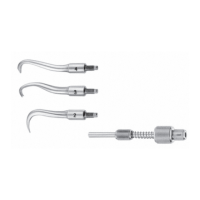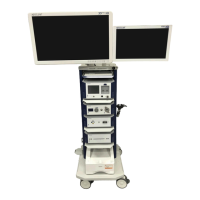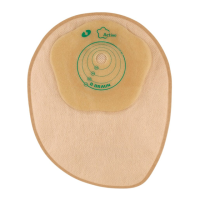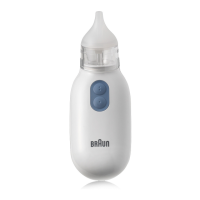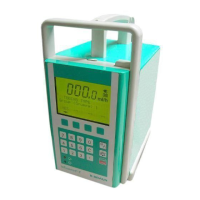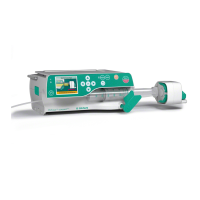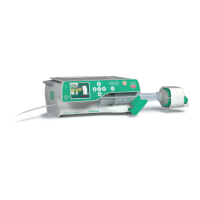8
Aesculap
®
Acculan 4
Attachments
6.4.8 Drill attachment for Synthes radiolucent angle transmission
GB645R
The drill attachment allows connecting a radiolucent angle transmission
for applying drill holes in the bone under radiographic control.
The drill attachment is only suitable for use of the radiolucent angle trans-
mission 511.300 from the Synthes company.
► Follow the instructions for the radiolucent angle transmission 511.300
in the operating instructions of the Synthes company.
Coupling the angle transmission
► Push the radiolucent angle transmission up to the stop on holder 8 of
the drill attachment 20.
► If necessary, slightly move the radiolucent unit.
Decouple angled handpiece
► Forcefully pull out the radiolucent angle transmission from the drill
attachment 20.
Couple/decouple the tool
► Follow the instructions for the radiolucent angle transmission 511.300
in the operating instructions of the Synthes company.
6.4.9 Insert and clamp Kirschner wire attachment GB641R
Note
The special Kirschner wire chuck is recommended for the placement of
guide wires. This quick-action chuck adapter allows quick and easy ten-
sioning of drilling wires.
For further information see TA014535 or TA014539 (flyer).
The following diameters can be set on the Kirschner wire attachment:
■ 0.6 mm to 1.8 mm
■ 1.8 mm to 3.0 mm
■ 3.0 mm to 4.0 mm
Insert Kirschner wire
► Ensure that the clamping lever 22 is in the starting position (deacti-
vated status).
► Set the adjusting sleeve 23 of the Kirschner wire attachment to the
desired diameter range:
– Push back the adjusting sleeve 23 and turn until the desired diam-
eter range has been reached.
– Release adjustment sleeve 23, making certain that adjustment
sleeve 23 clicks into position.
► Insert the Kirschner wire into the Kirschner wire chuck 24 until the
desired exposed length is achieved.
The Kirschner wire is held in the intended position in the attachment
by an automatic clamping mechanism.
Clamping the Kirschner wire
► Pull on the clamping lever 22 and hold in the desired position.
The further the clamping lever is pulled back, the higher the tension of
the Kirschner wire.
Note
The Kirschner wire will only remain tensioned with the clamping lever
pulled back. If the clamping lever is released, it will move back into the
starting position and the Kirschner wire is freely mobile.
6.5 Function checks
The function test must be performed before each use and after each intra-
operative change of attachment and tool.
► Check that the attachment is coupled properly. To test this, pull on the
attachment.
► Check that the tool is coupled properly. To do this, pull on the tool.
► Ensure that the tool blades are not mechanically damaged.
► Release drill and reamer for use (ON position).
► Briefly run the drill and reamer at maximum speed in clockwise and
counterclockwise mode.
► Make certain that the rotational direction is correct in each case.
► Check the product for damage, abnormal operation noises, heavy
vibration and excessive heat.
► Do not use the product if it is damaged or defective.
► Set aside the product if it is damaged.
WARNING
Risk of injury when using long guide wires!
► Use Kirschner wire protection sleeve when using
long guide wires.

